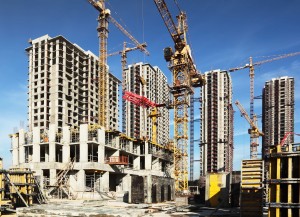According to Shaun Nugent, Advisory Board Member at Siecap, “Boom and Bust” is the reality of many Australian industries because of resource sector supercycles.

The graph below shows the effects of this in stark reality – a six-fold increase in mining construction over a six-year period and then a crash. Governments respond to partially fill the gap, often too late, and in doing so create new construction supercycles. Hidden in the graph below is the Major Road Construction Project forecast for Australia shown in blue. Whilst smaller in scale it is forecast to be a much faster ramp up, a tenfold increase in activity between 2014 and 2017. Transport for NSW in particular are dealing with this rapid ramp up at present with many concurrent projects in startup.
Can we do anything about resource supercycles? Probably Not!
Can we manage the effects of supercycles better? Absolutely Yes!

In a perfect world the project ramp ups would be phased to prevent demand shock on the asset owner, permitting & approvals processes and the design and construction sectors. But it’s not a perfect world. History has shown just how significant the demand shock can be.
So what are the challenges:
- Productivity of the Australian Construction Industry;
- Lost opportunity to deliver more infrastructure for less money;
- Destruction of service sector companies; and
- Australia now has significant sovereign risk – an approval is no longer bankable for long.
A solution consisting of:
- Better forecasting of impending down cycles;
- A bi-partisan Australian Infrastructure plan with approved long term GDP boosting projects, which is ready to go when needed;
- A well considered but enduring approvals regime (permits, approvals and political);
- Stagger the project startup schedules to assist in orderly reallocation of resources to make best use of existing capability;
- Programs to move delivery capacity from one sector to another; and
- Innovative skills based procurement models which assist rapid resource reallocation and break down inter-sector parochialism.
The benefits to Australia are:
- Estimated 5 to 10% decrease in cost of delivery which is a $3B per annum gain in funding for other projects;
- More infrastructure (schools, hospitals, roads etc.) for less money;
- Improvement in productivity of Australian businesses; and
- Less company and worker distress – reducing the cost of government support programs.
Who needs to be involved in this discussion:
- Three levels of government genuinely working together;
- Business leaders – big and small to set the agenda;
- Big business and unions working together; and
- Everyone else.
Australia as the “lucky country” was made, it didn’t just happen. Let’s get back to making it happen.

For more information, visit www.siecap.dev.cc.au.
